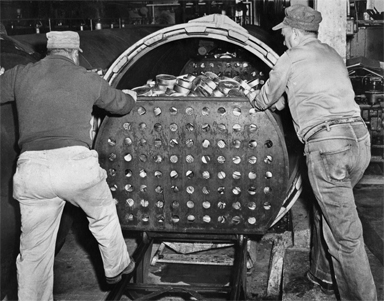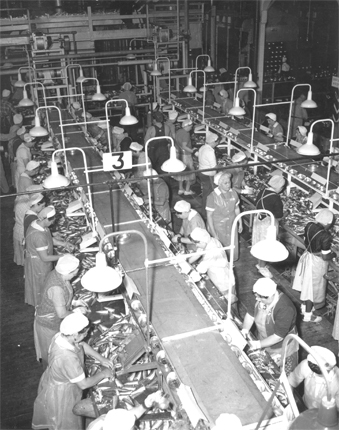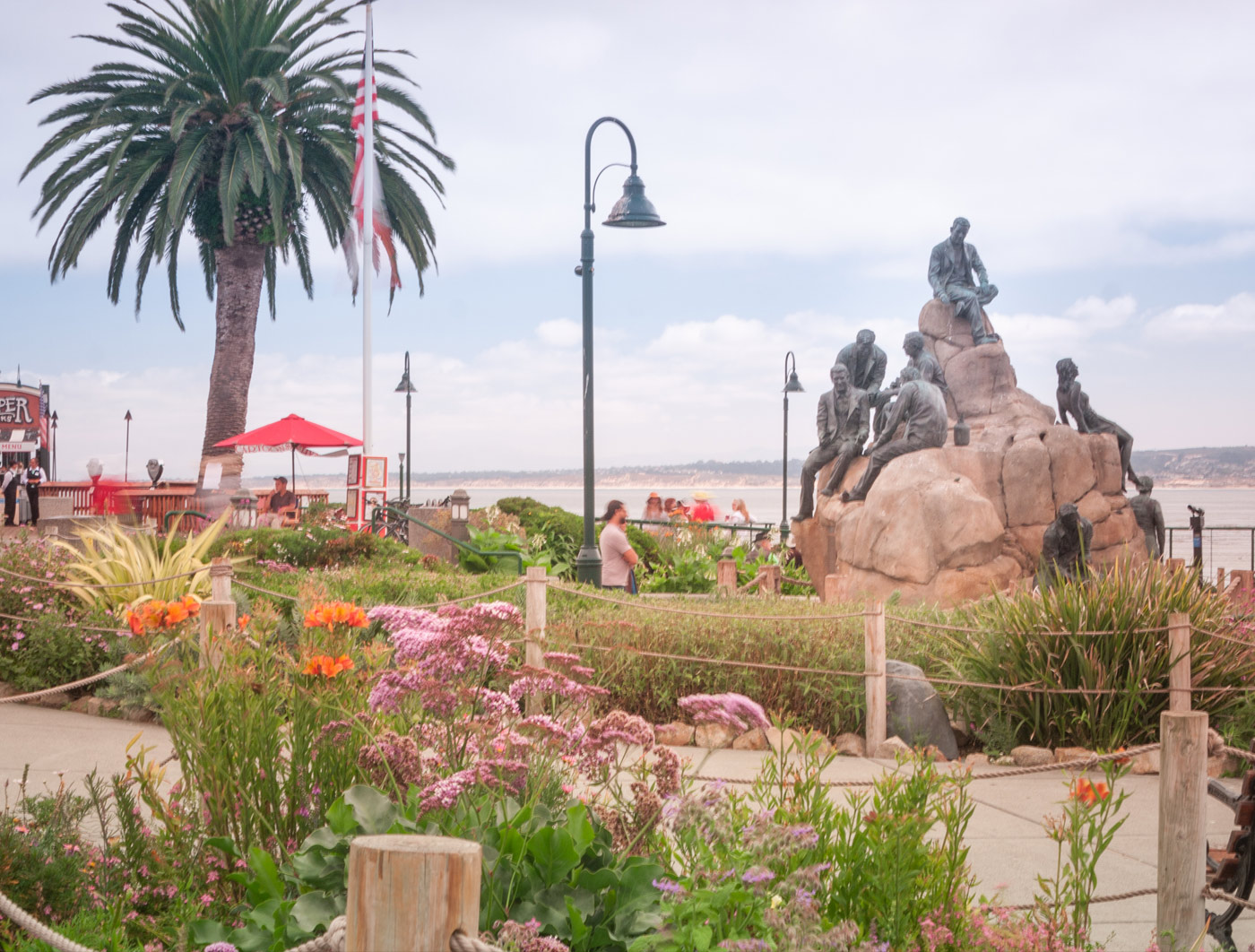
The Canneries
 The swift expansion of the Monterey fishing industry at the turn of the century gave birth to the fish canning industry and the street that would become Cannery Row. Frank Booth built the first cannery in Monterey. His rudimentary salmon cannery was located near Fisherman’s Wharf, but Cannery Row would spring up farther out of town, along Ocean View Avenue. The first major cannery on Ocean View Avenue was the Pacific Fish Company, born on February 14, 1908.
The swift expansion of the Monterey fishing industry at the turn of the century gave birth to the fish canning industry and the street that would become Cannery Row. Frank Booth built the first cannery in Monterey. His rudimentary salmon cannery was located near Fisherman’s Wharf, but Cannery Row would spring up farther out of town, along Ocean View Avenue. The first major cannery on Ocean View Avenue was the Pacific Fish Company, born on February 14, 1908.
The Sardine Explosion
Over the next decade, fishing and canning technology improved and prepared Monterey for the huge spike in demand for canned sardines brought about by World War I. The canneries expanded rapidly—with the Row becoming a boomtown of corrugated canneries lining the rocky shore. Cannery Row’s wartime production grew from 75,000 cases in 1915 to 1.4 million in 1918. After the war, canneries continued to profit by processing odorous fishmeal. The industry slowed during the Great Depression, but World War II saw another boom for the canning industry.
Cannery Life
Cannery workers, mostly immigrants, were called to work by cannery whistles, each with its own unique sound. The workday began with the arrival of the night catch and continued until the day’s catch was canned. The industry at first had no regulation of hours and shifts, and work in a cannery was often long, cold, smelly and unsafe.
The Canneries Collapse
After World War II, the sardines disappeared from Monterey Bay and brought economic disaster to Cannery Row. Before the collapse, Monterey’s fishing industry had become one of the most productive in the world due to the upwelling of cold, nutrient-rich water from the bottom of the Pacific Ocean, funneled to the surface via the vast underwater Monterey Canyon.
 The area fell into ruin….but was resurrected in 1968. Two Monterey restaurant managers with strong family ties to the fishing industry and their partners were chiefly responsible for halting the decay of Cannery Row and ensuring it would forever remain a place that paid tribute to the many cultures who had made it world famous. The founding of the Cannery Row Company in 1976 began a revival of Cannery Row that transformed it from a street of burned and decrepit canneries to the number one visitor destination on California’s Central Coast.
The area fell into ruin….but was resurrected in 1968. Two Monterey restaurant managers with strong family ties to the fishing industry and their partners were chiefly responsible for halting the decay of Cannery Row and ensuring it would forever remain a place that paid tribute to the many cultures who had made it world famous. The founding of the Cannery Row Company in 1976 began a revival of Cannery Row that transformed it from a street of burned and decrepit canneries to the number one visitor destination on California’s Central Coast.
How the Early Canneries Worked
Backed onto the Monterey Bay, the earliest canneries received fish via a pier constructed far out over the coastline. Workers cut each fish by hand to remove heads and tails, and then spread them to dry on wooden slats, or “flakes.”
Large metal baskets of fish were then drawn through boiling peanut oil, drained, packed into cans and soldered by hand.
The final step in the process was labeling and boxing. Innovations in fishing nets and machinery soon revolutionized the fishing and canning industries, enabling mass production.
The crossovers that connect the bay side of the street to the inland are vestiges of the conveyor belts that transported cans.


